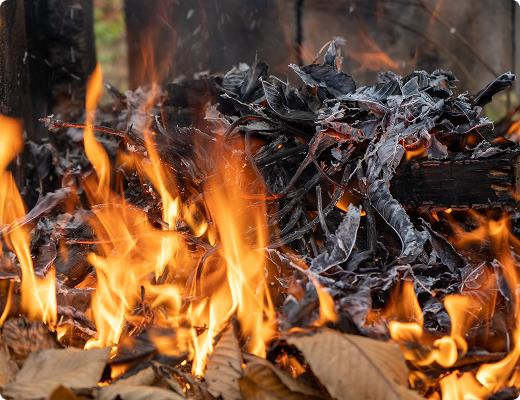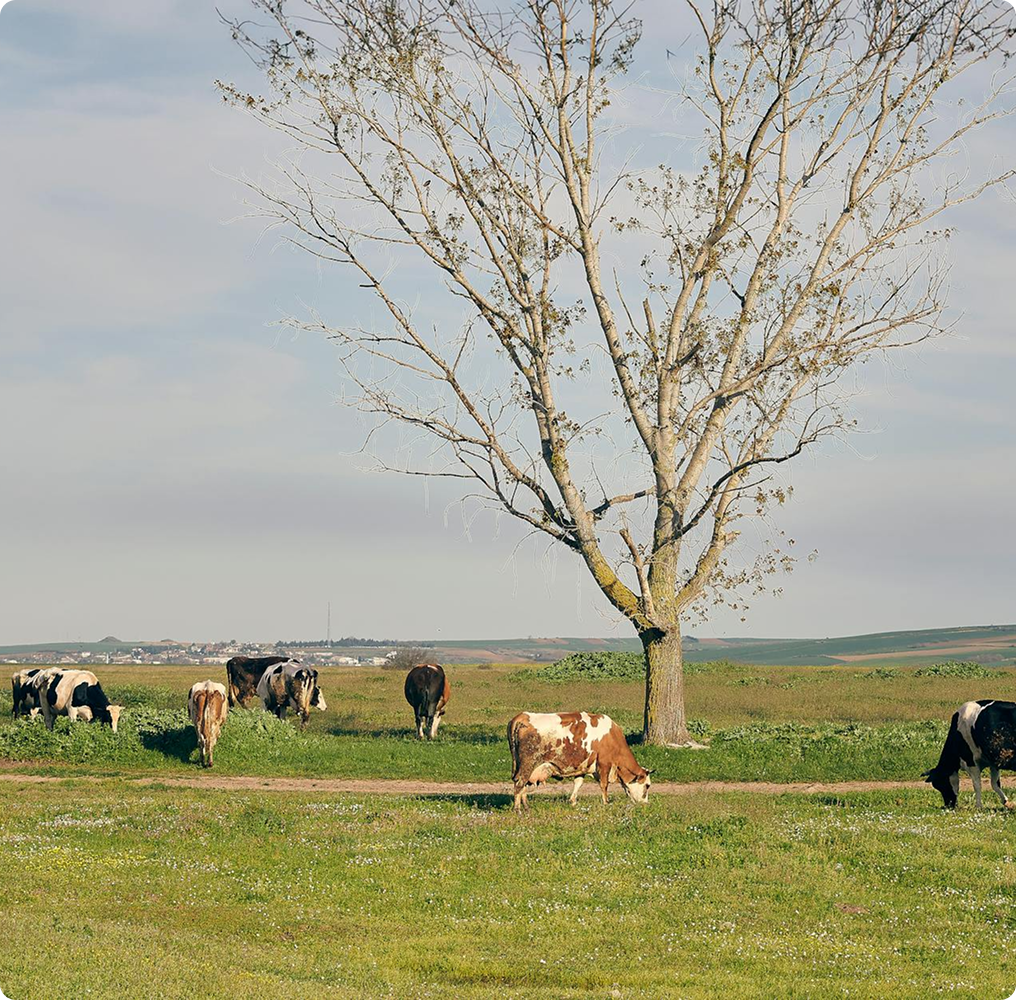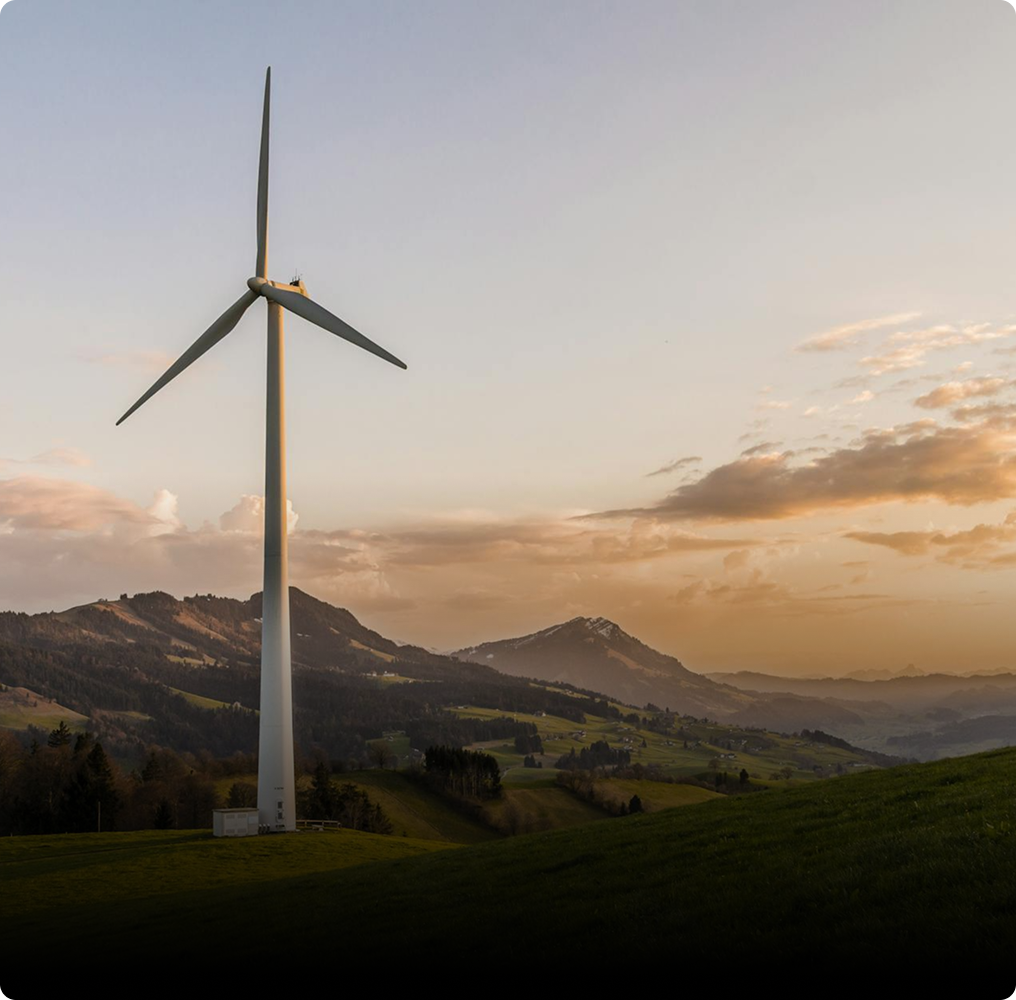
Methane
Methane
Methane (CH₄), as a short-lived climate pollutant with an atmospheric lifetime of approximately 12 years, plays a disproportionate role in near-term radiative forcing despite its transient presence. Its high instantaneous radiative efficiency and its role in tropospheric ozone formation make it a key target for mitigation, particularly due to its dual impact on climate and air quality .
Recent studies using perturbation-response models emphasize that methane abatement yields significant co-benefits for public health and agricultural productivity by reducing surface ozone concentrations.


Methane Emissions Trend in India
This graph shows the fluctuating trend of Methane Emissions in India over the years, highlighting periods of increase and decline. The variations emphasize the need for targeted strategies to curb methane emissions effectively.
Source: NATCOM1, NATCOM 2, INCCA, BUR1, BUR 2, BUR 3 and BUR 4
The decline in emissions from industrial wastewater after 2014 is attributed to a reduction in wastewater generated per tonne of product from both the pulp and paper industry from 127.5 m³ (2005–2014) to 57 m³ (2015–2018) and the tannery industry from 35 m³ to 32 m³ over the same periods.
Sectoral Breakdown of Methane Emissions
Sectoral share of methane emissions in 2000
Source: NATCOM
Sectoral share of methane emissions in 2020
Source: BUR 4
Key Contributors to Methane Emissions


Livestock


Rice Cultivation


Wastewater (Domestic and Industrial)


Solid Waste (Landfills)

Biomass Burning


IPPU


Fossil Fuel Industry (Oil, Gas, and Coal)
Per Capita Methane Emissions In 2018
Mitigation Measures
Effective methane mitigation requires targeted strategies across agriculture, waste, energy, and ecosystems, complemented by strong policies and global commitments.

Agriculture & Livestock
Improving agricultural practices and livestock management plays a key role in reducing methane emissions. Targeted interventions across feed, manure, and rice cultivation can significantly cut emissions while enhancing productivity.
Improved Livestock Management:
-
 Balanced rationing and the use of
feed additives (e.g., nitrates, fats, seaweed), along
with targeted
dietary changes, can reduce enteric fermentation in
ruminants, thereby
lowering methane output per animal.
Breeding programs to develop
low-methane-emitting livestock.
Balanced rationing and the use of
feed additives (e.g., nitrates, fats, seaweed), along
with targeted
dietary changes, can reduce enteric fermentation in
ruminants, thereby
lowering methane output per animal.
Breeding programs to develop
low-methane-emitting livestock.
Manure Management:
-
 Capturing methane from anaerobic manure systems using
biogas digesters or shifting to
aerobic
composting
reduces emissions and recovers energy.
Capturing methane from anaerobic manure systems using
biogas digesters or shifting to
aerobic
composting
reduces emissions and recovers energy.
Alternate Wetting and Drying (AWD) in Rice Cultivation:
-
 Periodic draining of rice fields interrupts anaerobic
conditions, significantly cutting
methane emissions without reducing yields.
Periodic draining of rice fields interrupts anaerobic
conditions, significantly cutting
methane emissions without reducing yields.

Waste Management
Effective waste and wastewater management can significantly reduce methane emissions. Capturing methane from landfills and treatment plants also provides opportunities for clean energy recovery.
Improving Landfill Methane Capture:
-
 Install landfill gas collection systems to capture and use methane for energy.
Install landfill gas collection systems to capture and use methane for energy.
-
 Improve waste segregation and composting to minimize organic waste decomposition.
Improve waste segregation and composting to minimize organic waste decomposition.
Enhancing Wastewater Treatment:
-
 Use anaerobic digesters in sewage treatment plants.
Use anaerobic digesters in sewage treatment plants.
-
 Upgrade to modern treatment technologies that recover methane.
Upgrade to modern treatment technologies that recover methane.

Energy Sector (Oil, Gas & Coal)
Reducing methane leaks and shifting to cleaner energy sources are key strategies to curb emissions in the oil, gas, and coal sectors while advancing energy sustainability.
Reducing Methane Leaks in Oil & Gas Production:
-
 Implement leak detection & repair (LDAR) programs.
Implement leak detection & repair (LDAR) programs.
-
 Use low-emission technologies in drilling, transportation, and refining.
Use low-emission technologies in drilling, transportation, and refining.
-
 Ban routine flaring and venting of gas from oil extraction.
Ban routine flaring and venting of gas from oil extraction.
Transitioning to Cleaner Energy Sources:
-
 Increase the use of renewable energy (solar, wind, hydro) to reduce reliance on fossil fuels.
Increase the use of renewable energy (solar, wind, hydro) to reduce reliance on fossil fuels.
-
 Promote methane capture from coal mines (coal bed methane recovery).
Promote methane capture from coal mines (coal bed methane recovery).

Natural Ecosystem & Wetlands
Protecting natural ecosystems and wetlands helps regulate methane emissions and boosts carbon storage, supporting both climate and ecological balance.
-
 Protect and restore wetlands to prevent excess methane emissions from degraded ecosystems.
Protect and restore wetlands to prevent excess methane emissions from degraded ecosystems.
-
 Enhance soil carbon sequestration through sustainable land-use practices.
Enhance soil carbon sequestration through sustainable land-use practices.
benefits
Climate Benefits
Methane reduction is a powerful tool for slowing global warming in the near term. It also improves Air quality and enhances the ability of ecosystems to store carbon.
Rapid Reduction in Global
Warming:
Methane contributes approximately 30% of current global warming.
Reducing methane emissions by 45% by 2030 could prevent 0.3°C of warming
by 2040, making it one of the most effective near-term climate actions.
Lower Ozone Formation:
Methane is a key precursor to tropospheric ozone (O₃), a short-lived
climate forcer and air pollutant. Reducing methane leads to lower
ground-level ozone concentrations, improving air quality while also
contributing to climate mitigation
Improved Carbon Sequestration in
Ecosystems:
High methane concentrations negatively impact wetland
ecosystems and forests by altering biogeochemical cycles. Lowering
methane emissions allows ecosystems to sequester more carbon, enhancing
their role as carbon sinks

Health Benefits
Reducing methane emissions improves public health by lowering ozone pollution , preventing respiratory diseases, and enhancing overall workforce productivity.
Reduction in Premature
Mortality:
Methane-driven ozone pollution contributes to over 500,000 premature
deaths annually due to respiratory and cardiovascular diseases.
Mitigating methane could prevent 260,000 deaths per year globally
Decreased Respiratory and
Cardiovascular Diseases:
Lower ozone levels due to methane reductions can significantly decrease
incidences of asthma, chronic obstructive pulmonary disease (COPD), and
other respiratory conditions
Workforce Productivity
Gains:
Exposure to high ozone levels reduces labor productivity, particularly
in outdoor industries. A global methane reduction strategy could improve
worker health, leading to economic benefits of $4–30 billion annually

Agricultural & Food Security Benefits
Methane reduction enhances agricultural productivity by preventing crop losses, improving livestock efficiency and ensuring greater food security.
Increased Crop Yields:
Methane-driven ozone pollution reduces crop productivity, causing estimated losses of 4–16% in staple crops such as wheat, maize, and soybean. Rice cultivation can lead to soil compactions, nutirient loss, soil salinization, soil erosion, etc. Therefore, reducing methane emissions could improve soil health and also prevent annual agricultural losses of 26 million tonnes of crops.
Improved Livestock
Efficiency:
Methane mitigation strategies in livestock, such as manure management, improved feed and targeted feed additives enhance productivity and reduce feed costs per unit yields thus benefiting farmers and increasing food supply.

Economic & Energy Benefits
Methane mitigation fosters economic growth by reducing energy costs creating jobs in renewable sectors, and promoting cost-effective climate solutions.
Enhanced Energy Recovery:
Methane is the primary component of natural gas. Capturing and utilizing
fugitive methane emissions from landfills, coal mines, and oil and gas
operations could provide low-cost energy, reducing dependence on fossil
fuels
Cost-Effective Climate Action:
The top 10 most cost-effective methane reduction strategies could
achieve 90% of the needed reductions by 2030 with low or negative costs,
meaning they could save money in the long term (Harmsen et al., 2019).
Job Creation in Renewable Energy and Waste Management:
Implementing methane mitigation policies in biogas production, improved
livestock practices, and landfill gas recovery generates employment
opportunities while promoting sustainable economic growth.

Environmental & Ecosystem Benefits
Reducing methane emissions safeguards ecosystems, preserves biodiversity, and helps maintain climate stability by preventing extreme environmental disruptions.
Protection of Freshwater and Marine
Ecosystems:
Methane contributes to ocean acidification,threatening
fisheries and biodiversity. Reducing methane emissions helps maintain
healthy aquatic ecosystems and sustainable fisheries .
Preservation of Arctic Ice and
Permafrost Stability:
Methane emissions contribute to Arctic warming and permafrost thawing,
which releases additional greenhouse gases. Cutting methane emissions
helps slow this feedback loop and protect polar and tundra ecosystems .
Reduction in Wildfires:
Methane-driven warming increases drought frequency and wildfire risks.
Methane mitigation reduces the probability of climate-induced forest
fires, protecting air quality and biodiversity.

